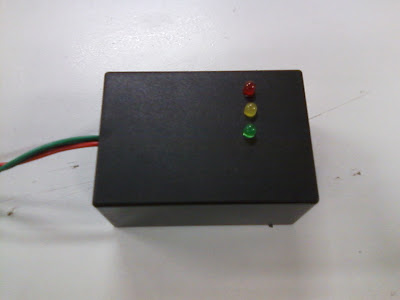Ignition
 |
| Ignition Tested Engine |
Spark Plugs
All four spark plugs were removed and examined for damage the main problem the plugs had was a build up of soot or carbon deposits on the plugs this can be caused by the mixture being to rich or the ignition being to weak. Causes miss firing, hard starting and hesitation.
Can be stopped by adjusting the mixture by turning mixture screw on carburettor or finding source of ignition problem. Process explained below
High Tension leads
These are tested by measuring length of leads and getting resistance with a Ohm meter connected to each end of leads. resistance should be 33.5Ω Per mm
(eg. 600mmx33.5Ω=20100Ω)
All the tested leads were within specification with the highest resistance of 3900Ω detected by meter which was below the maximum resistance allowed.
If the resistance was higher than maximum this would indicate that there is broken wires in the lead which would cause too much resistance in lead for distributor to work efficiently effecting spark strength.
Distributor Adjusting
The distributor was also adjusted to make sure it is delivering current to spark plugs at the correct time during the combustion cycle. If it was not doing this it would cause a loss of power or poor fuel economy if spark was not occurring at the correct time.
Process of Adjustment
Ignition Timing
this is checked using a timing light and tachometer. Timing is important because it determines when spark should be occurring during combustion cycle. Spark plugs should be activating after piston reaches TDC at peak cylinder pressure. If it is not doing this engine power and fuel economy will be greatly effected because spark is not happening at correct time. The tested timing was out of spec and would need to be adjusted to allow for correct sparking
Process of Testing
All four spark plugs were removed and examined for damage the main problem the plugs had was a build up of soot or carbon deposits on the plugs this can be caused by the mixture being to rich or the ignition being to weak. Causes miss firing, hard starting and hesitation.
 |
| Plugs Removed. shows build up of carbon at sparking ends of plugs |
High Tension leads
These are tested by measuring length of leads and getting resistance with a Ohm meter connected to each end of leads. resistance should be 33.5Ω Per mm
(eg. 600mmx33.5Ω=20100Ω)
All the tested leads were within specification with the highest resistance of 3900Ω detected by meter which was below the maximum resistance allowed.
If the resistance was higher than maximum this would indicate that there is broken wires in the lead which would cause too much resistance in lead for distributor to work efficiently effecting spark strength.
Distributor Adjusting
The distributor was also adjusted to make sure it is delivering current to spark plugs at the correct time during the combustion cycle. If it was not doing this it would cause a loss of power or poor fuel economy if spark was not occurring at the correct time.
Process of Adjustment
- Remove distributor from crankcase
- Turn engine over using spanner on front of pulley until exhaust valve was fully open
- continue to slowly rotate until intake valve begins to move
- Now distributor will be aligned correctly and can be put back on engine
- move distributor at bolting point until reading on ohm meter shows "OL" meter is connected to a earth and positive lead goes to solenoid connector
- tighten bolt enough so that rotor can be moved and shows a reading on the ohm meter of 0.03Ω this shows a circuit to spark plugs.
Ignition Timing
this is checked using a timing light and tachometer. Timing is important because it determines when spark should be occurring during combustion cycle. Spark plugs should be activating after piston reaches TDC at peak cylinder pressure. If it is not doing this engine power and fuel economy will be greatly effected because spark is not happening at correct time. The tested timing was out of spec and would need to be adjusted to allow for correct sparking
Process of Testing
- Connect timing light to battery and 1 of the spark plugs and connect multimeter set on RPM and tachometer attached to same lead
- Gradually increase engine RPM until timing mark on pulley begins to move from starting position
- continue to increase RPM until timing mark stops advancing and record RPM
- obtain total advance by taking away total from recorded results (eg. 16 degrees - 5 degrees = 11 degrees )

















